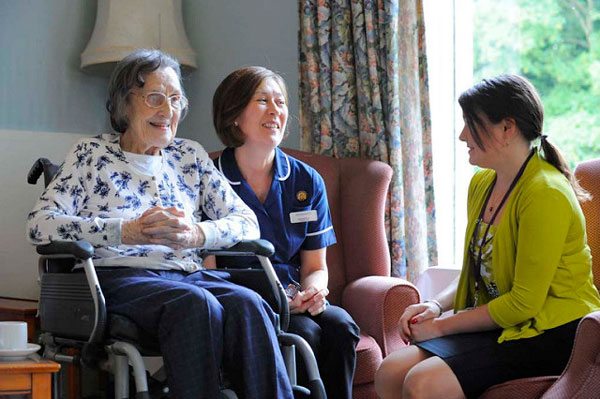
April 30, 2018; Columbus Dispatch
“Demand is soaring for a workforce to help people with intellectual and developmental disabilities live as they and their families choose. But low wages, high levels of responsibility and a lack of awareness about ‘direct-support professional’ jobs has led to a staffing crisis that threatens the promise of community living for thousands of Ohioans and others throughout the nation,” writes Rita Price in the Columbus Dispatch.
Of course, NPQ has written frequently on the plight of care workers, including those who care for disabled clients, those who care for the elderly, and childcare workers. The persistence of low wages is the main driver of the shortage of workers. In our writing, NPQ has explored available alternatives to the status quo, such as unions (including an article earlier this week on a strike in Connecticut) and worker cooperatives. Additionally, NPQ’s Cyndi Suarez has covered the work of Caring Across Generations, a coalition of more than 100 local, state, and national organizations that has called for a minimum wage of $15 an hour and other policies that benefit caregivers.
Price’s reporting does not explore alternatives, but in a series of four articles she does detail key aspects of the current situation. In Ohio alone, there are an estimated 330,000 people with intellectual and development disabilities, according to ARC of Ohio, a statewide membership association. These people often go without needed support.
As Price writes, “Companies and nonprofit agencies that offer care and support to people with disabilities say they are struggling more than ever to attract workers, forcing some to terminate services and decline new clients. Parents go without sleep and take leave from their jobs to fill in.”
In Ohio, “the average hourly wage for a direct-support provider” reports Price, was, as of 2016, “about $11.16 an hour—less than $24,000 a year.” Low wages lead to high turnover, particularly in a national economy where unemployment stands at a low 4.1 percent, giving care workers more options. For example, as Price points out, warehouse jobs—not generally known as high-wage positions—pay $15 an hour in Ohio.
Sign up for our free newsletters
Subscribe to NPQ's newsletters to have our top stories delivered directly to your inbox.
By signing up, you agree to our privacy policy and terms of use, and to receive messages from NPQ and our partners.
Mark Davis, president of the Ohio Provider Resource Association reports that employee turnover is at 50 percent. “Ten to 20 percent of jobs are vacant,” notes Price. “About two-thirds of workers qualify for federal health-care assistance.” But low wages are not the only stressor. Overwork is another. “We believe that 76 percent of people are working six days a week,” Davis said.
Amy Hewitt, director of the Research and Training Center on Community Living at the University of Minnesota, helps put these numbers in perspective. “You will hear providers talk about the workforce crisis, and they use that word,” says Hewitt. “It’s far worse than a crisis. Look it up in the dictionary—crises don’t last 30 years. This is a systemic failure that we’ve been dealing with for more than 30 years.”
“The way in which we’re able to afford community services and to argue that they’re less expensive,” Hewitt notes, “is to pay staff less and get rid of their benefits.” Hewitt contends that, at minimum, a 30-percent increase is required to approach a living wage.
John Martin, director of the Ohio Department of Developmental Disabilities, notes that in Ohio, Medicaid reimbursement rates for community-based care went up by about six percent two years ago. But for most of the previous decade, there had been no significant budget increase.
Earlier this year, NPQ noted that the status quo in home healthcare “is neither just nor sustainable.” NPQ has long called out the need for nonprofits to challenge the wage ghettos—such as the ones involving care workers—that are ubiquitous in our society. Back in 2016, Ruth McCambridge in NPQ wrote that to advocate “for expansion of necessary services without advocating for a living wage for the workforce needed for such an expansion” would only serve to perpetuate the inequity. Two years later, this challenge remains with us still.—Steve Dubb













